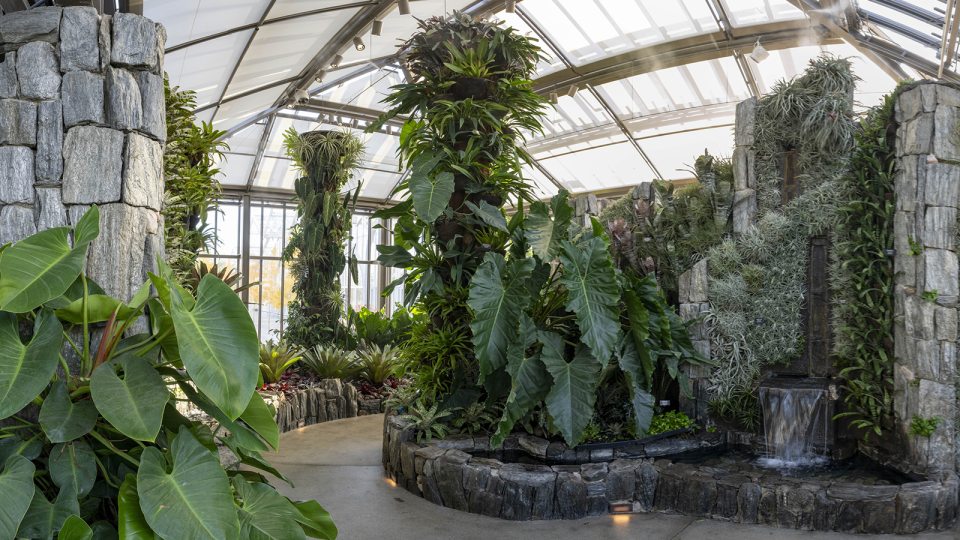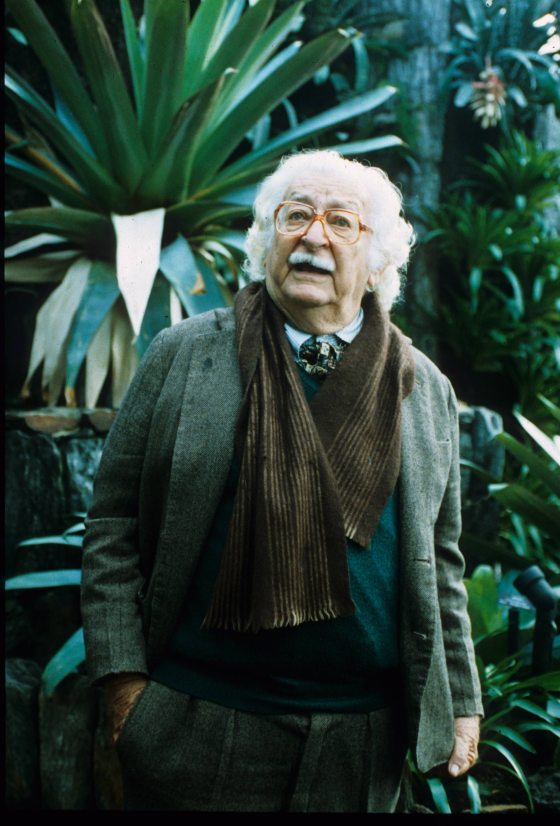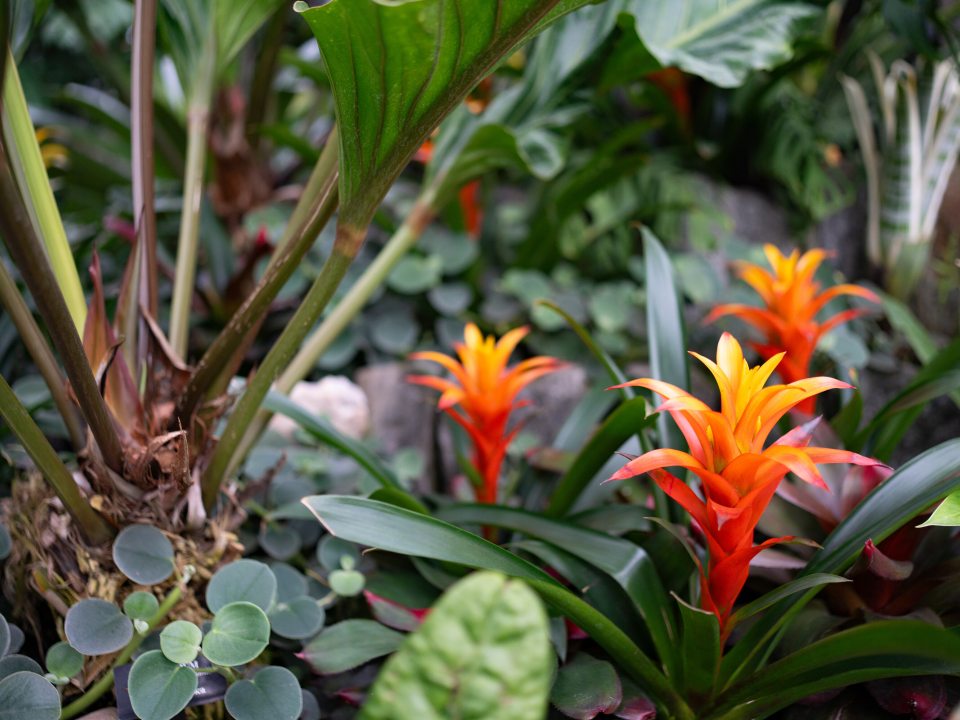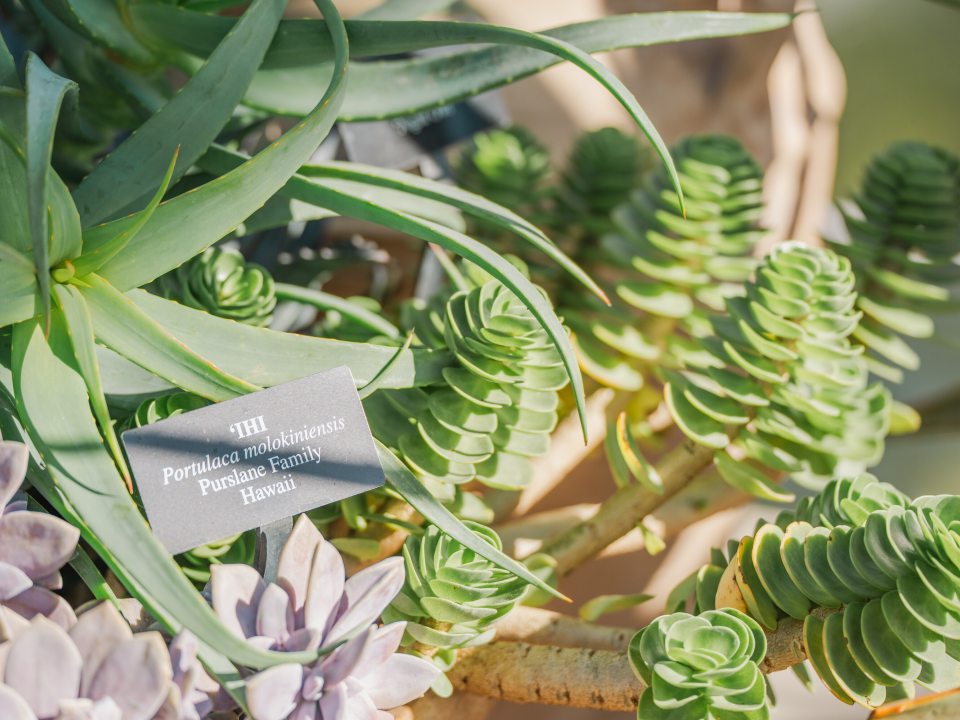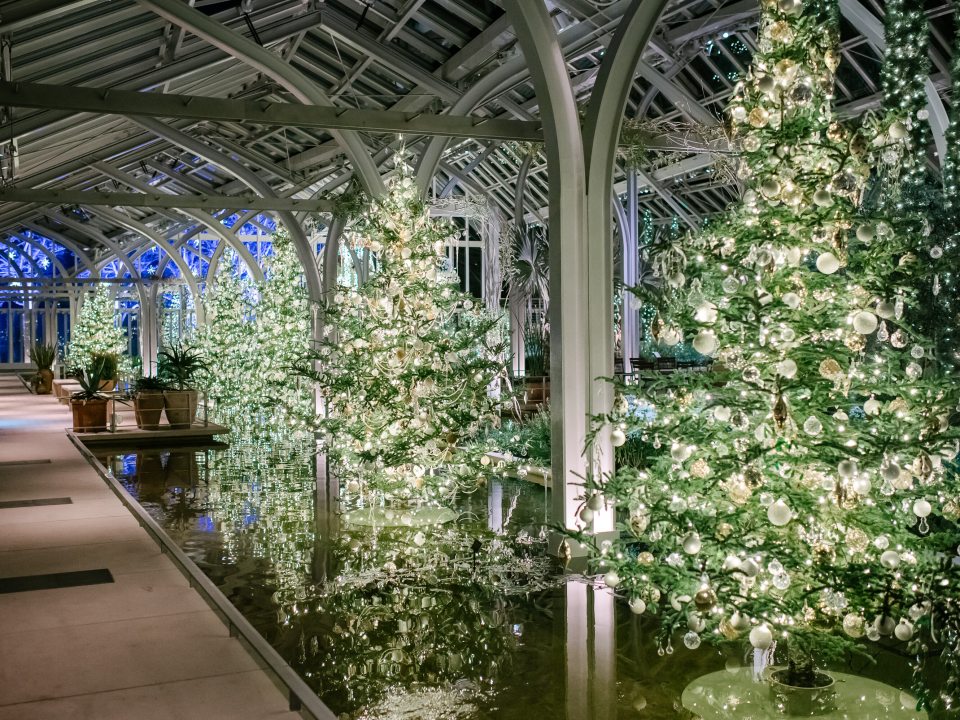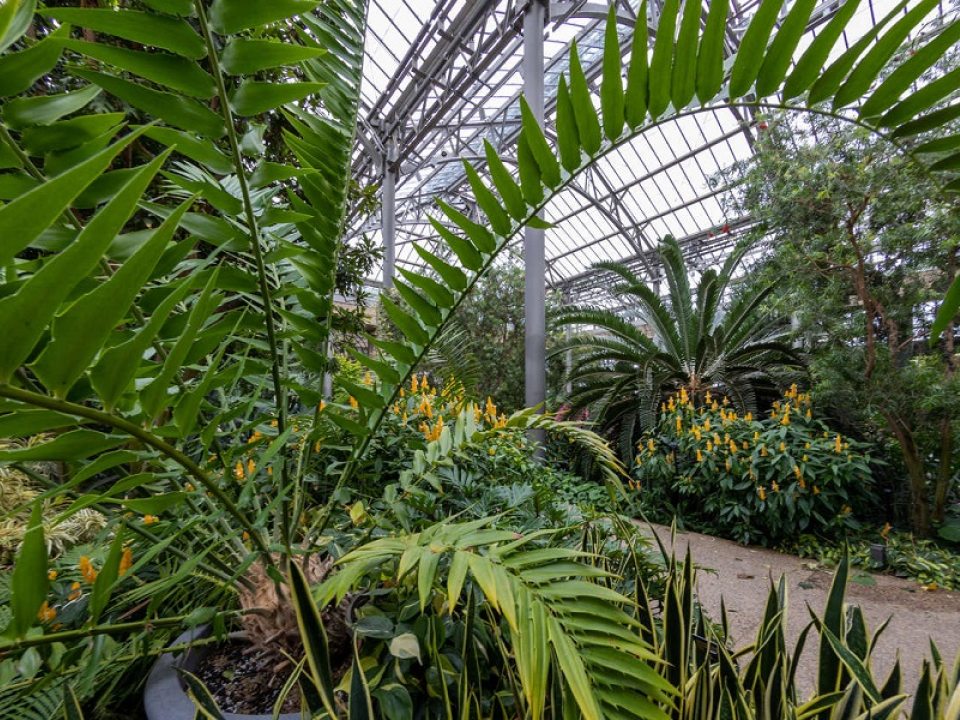Nestled within a modern, glittering glass house lies the Cascade Garden, the sole North American design by the inimitable landscape architect, Roberto Burle Marx (1909-1994). Upon entering this verdant sanctuary, a profusion of tropical plants bursts forth, densely filling the space from every direction.
Every moment spent here is an invitation to pause, linger, and revel in the palpable vitality of this intimate garden experience. Inspired by an equatorial coastal rainforest, elemental simplicity reigns—plants, water, and stone come together to envelop the senses. Gentle humidity softens the air, while the rhythm of trickling water inspires a mood of contemplation and appreciation for Burle Marx’s innovative, dynamic artistic vision.
About This Garden
The Cascade Garden is a rare work of landscape art that gathers all the iconic elements of a Burle Marx design, reflecting his love of the natural world and the beauty of Brazil’s native flora and landscapes. This expertly crafted environment is home to dozens of species of plants, primarily from the bromeliad (Bromeliaceae) and aroid (Araceae) families, as well as other plants typically found in association with bromeliads in a tropical rainforest. Sweeps of single species create broad brushstrokes of vegetation, vines wind up and around vertical elements, and epiphytic plants cover the columns and walls, giving the impression of being in a dense, tropical rainforest. Waterfalls, an ever-present element of sound and movement, splash the nearby plants, forming tranquil pools within their bases. A curving path meanders through layers of green amid eye-level, intimate views of the sweeps of tropical plants. The immersive nature of this singular garden is intentional—and impossible to resist.
